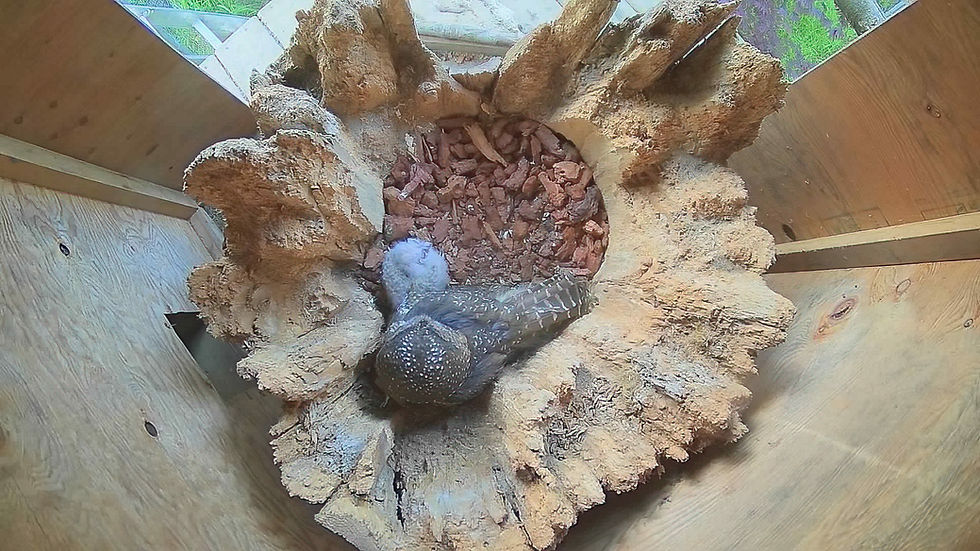Behind the Scenes: Rodent Colony
- Oct 1, 2021
- 2 min read

At the Northern Spotted Owl Breeding Program (NSOBP), we not only breed owls, but their food too! With over 30 owl mouths to feed each and every day, it is important that there is a steady stream of rodents being produced. Good nutrition is a vital component of owl fertility and chick health, so breeding our own owl food source ensures we are doing our best to raise healthy owls.
On a typical day during the non-breeding season, the owls need a total of 60-70 mice or 30 rats per day. It’s an entirely different story in the spring when there are also chicks to feed. These young owls grow fast, and they do not eat prey whole, for example they are fed only muscle for the first couple days of their lives.
It is important that rodent production is carefully monitored so that the food supply remains stable and any excess can be frozen in case of emergency. What we feed to the rodents is just as important as what we feed to the owls, so we have developed a rodent food recipe that contains a mix of grains, seeds, and proteins.
The rodents are given fresh food and water daily, enrichment in the form of cardboard boxes and toilet rolls, and fresh bedding each week. Each individual is checked daily for any health concerns too. This benefits the individual rat or mice, but also prevents any sickness from spreading throughout the colony and decreases the risk of zoonotic diseases infecting the owls or even us humans.
By breeding the rodents on site, we are able to control all of these environmental factors and act immediately when a rodent is not acting normally. Happy, healthy mice and rats are more nutritious mice and rats!
A rodent breeding colony of this size means that we need a separate building at the NSOBP to house over 600 rodents. The upkeep in the appropriately named “Rodent Building” requires up to four hours each day and is a large component of our volunteer program. Many volunteers help out with the rodents by feeding, filling water bottles, washing rodent tubs, doing laundry, and recordkeeping.
In the wild, northern spotted owls eat primarily small mammals, with their favourite being northern flying squirrels. By breeding both mice and rats, we are able to offer the owls a variety of prey items, with the occasional day-old poultry cull added for some extra nutrition. But this doesn’t perfectly mimic a wild diet, so in the future, we would like to breed northern flying squirrels to feed to the owls, especially those that will be released into the wild.
With so many owl chicks born this year, and hopefully even more next year, it is important that the rodent colony stays productive and supplies enough food to keep all of the owls well fed.
This article was originally published in our 2021 Newsletter.








